Have you ever tried to communicate with a ghost to solve their murder? In Mysterium, that’s exactly what you do; only instead of words, the ghost communicates through cryptic visions. It’s a fantastic concept for a board game, blending deduction with eerie, dreamlike imagery. But can a digital adaptation maintain that same magic?
Gameplay
In Mysterium you play as one of four mediums or the ghost. The ghost’s job is to send visions to the mediums to help them solve a murder. These visions come in the form of cards with detailed paintings on them.
Each medium will need to figure out a suspect, a location, and a murder weapon. Again, each of these three things are represented by paintings on a card. Mediums work step by step: first identifying a suspect, then the crime scene, and finally the murder weapon.
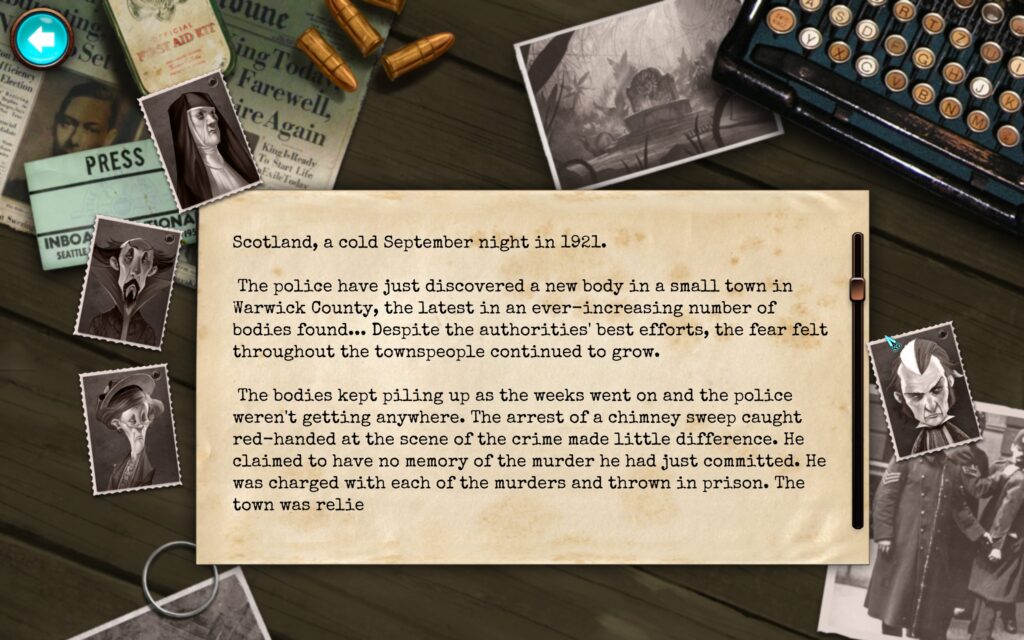
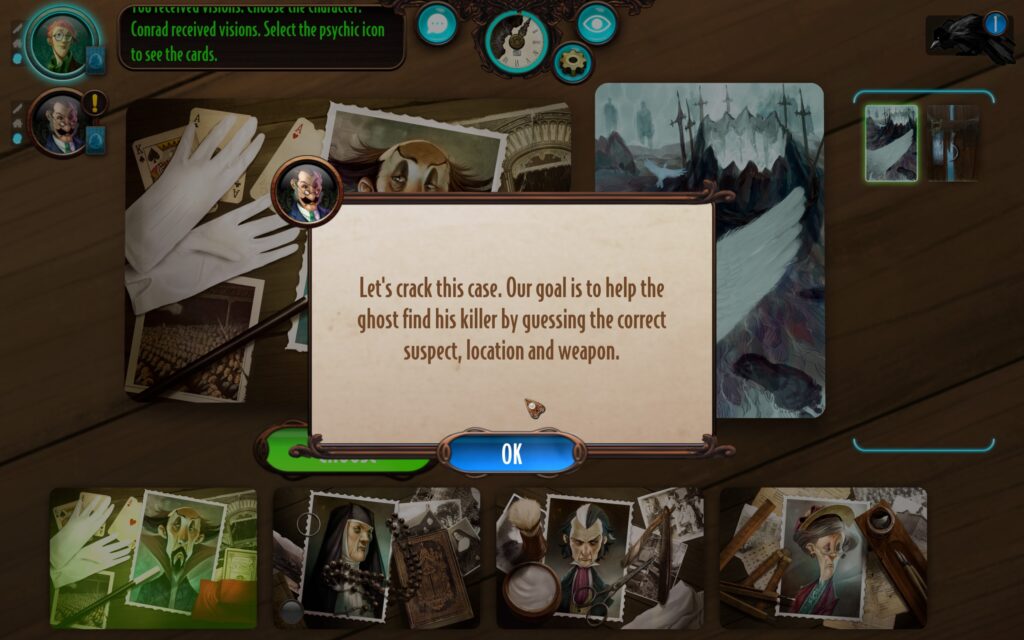
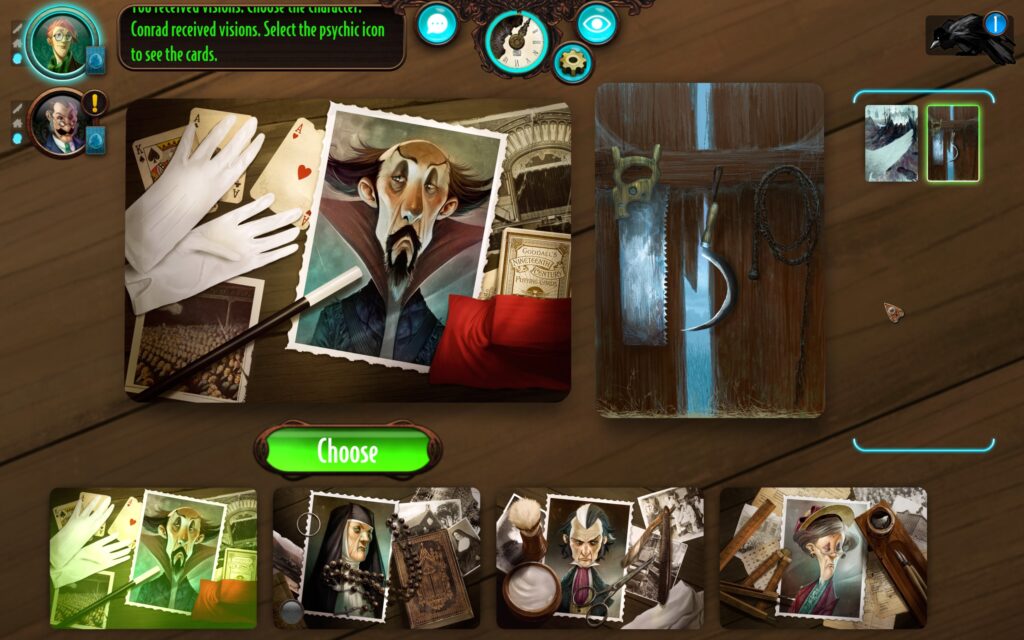
The ghost attempts to clue each medium onto the correct suspect, location, or murder weapon by giving each medium a number of vision cards. They can be matched however a ghost likes – as an example a vision card might have a knife on it, which could be used as a clue for the sword. Or a suspect may carry a bell, which matches a bell in the background of a vision card. Even the overall colour schemes of the card could be used as clues.
After each guess, the ghost will confirm to the mediums if they are right or wrong. If they guess right, they move onto the next clue in the next round. Otherwise they have to try and guess the current clue again. The number of rounds (or hours) are limited, and if they run out, everyone loses.
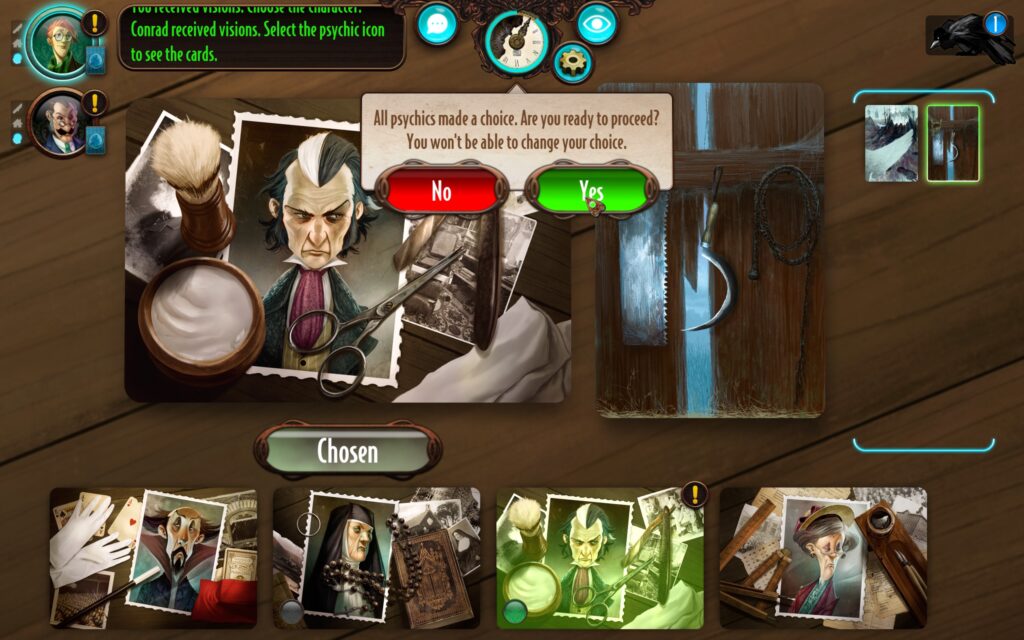
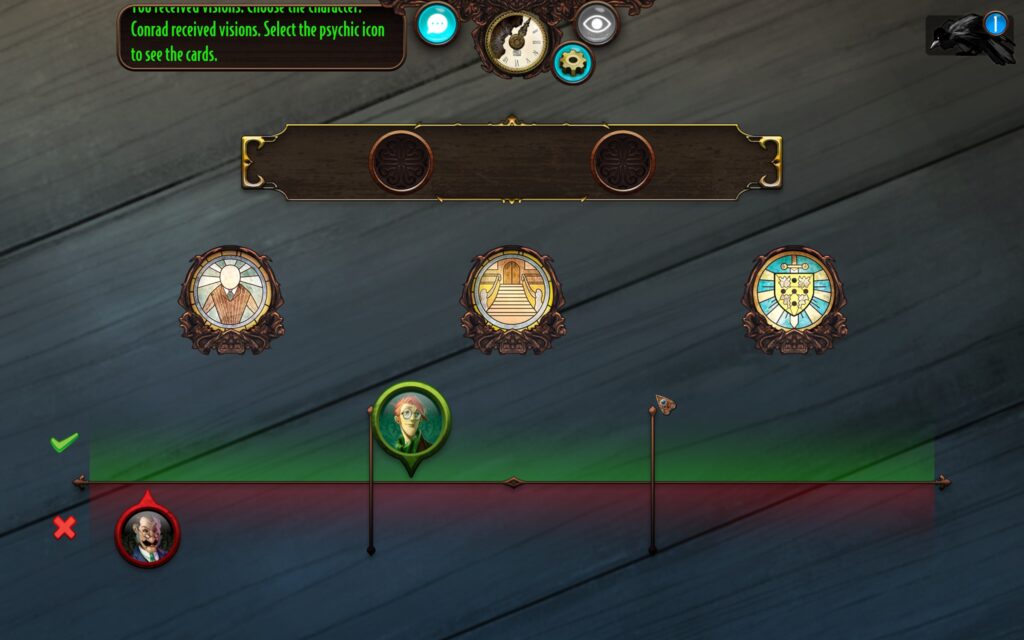
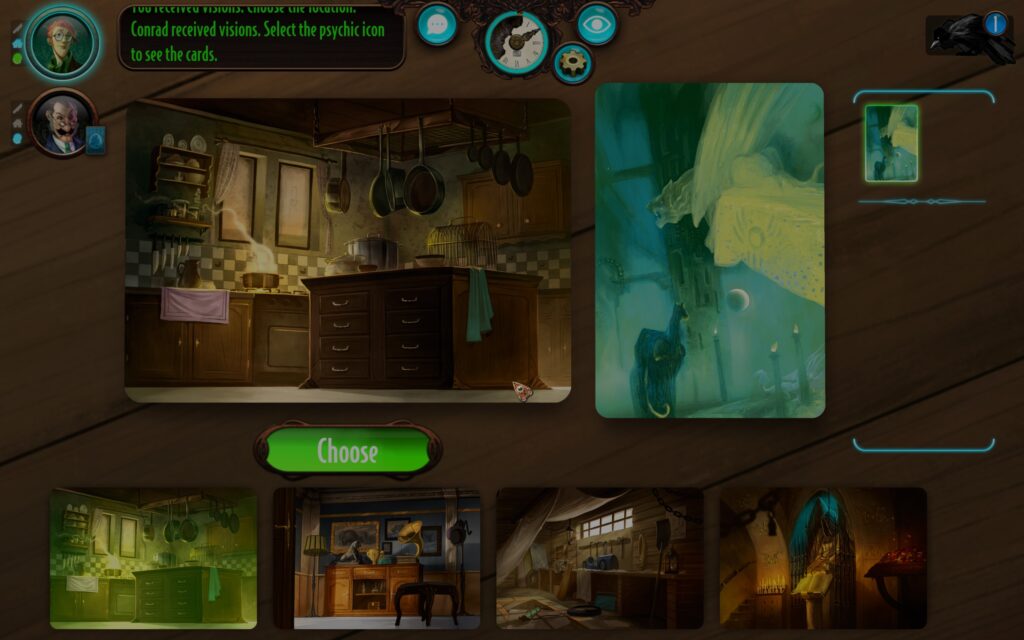
After each medium has figured out a suspect, location, and murder weapon, the ghost now has to tell them which one is correct with even more clues. They assign a vision card each to the suspect, location, and murder weapon. The mediums then have to guess which combination of clues is correct. If the majority guess right, the ghost can move on and rest in peace. Otherwise, everyone loses.
Fun?
In writing this review I looked up some reviews of the board game, since I don’t have access to it myself. I learned one aspect of the gameplay that I wasn’t aware of is that the mediums will discuss the visions given to them in front of the mute ghost. It’s a team game, and everyone is working together to solve the murder. Listening to other players can give the ghost an impression of how their visions have been interpreted thus far, and they can adapt their strategy based on these conversations.
The video game version removes this vital social interaction. The mediums are presented with different screens and communication between them doesn’t seem to be encouraged. They are left to solve their clues in isolation.
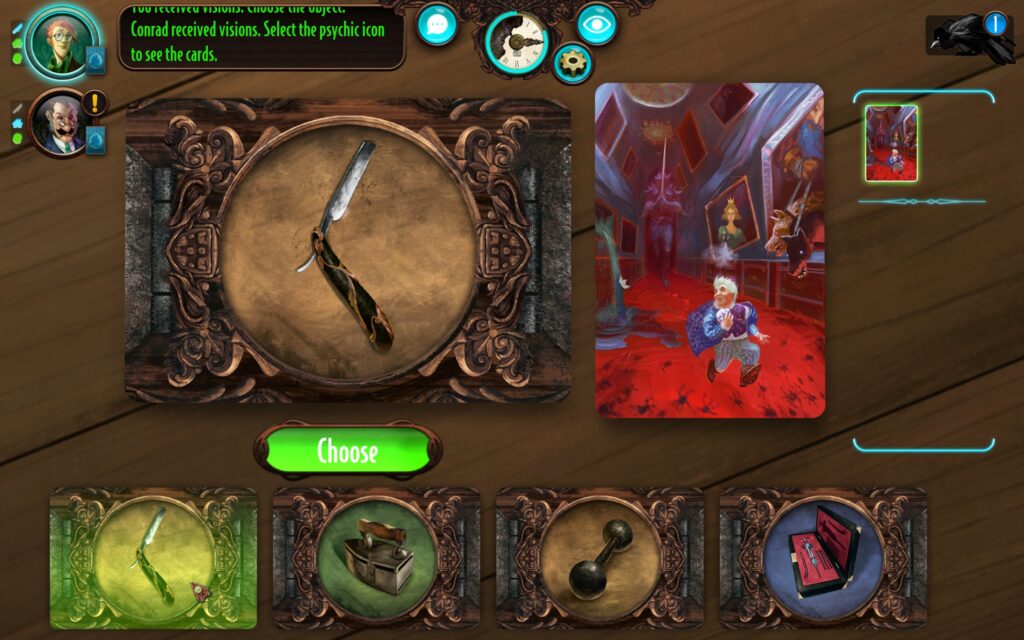
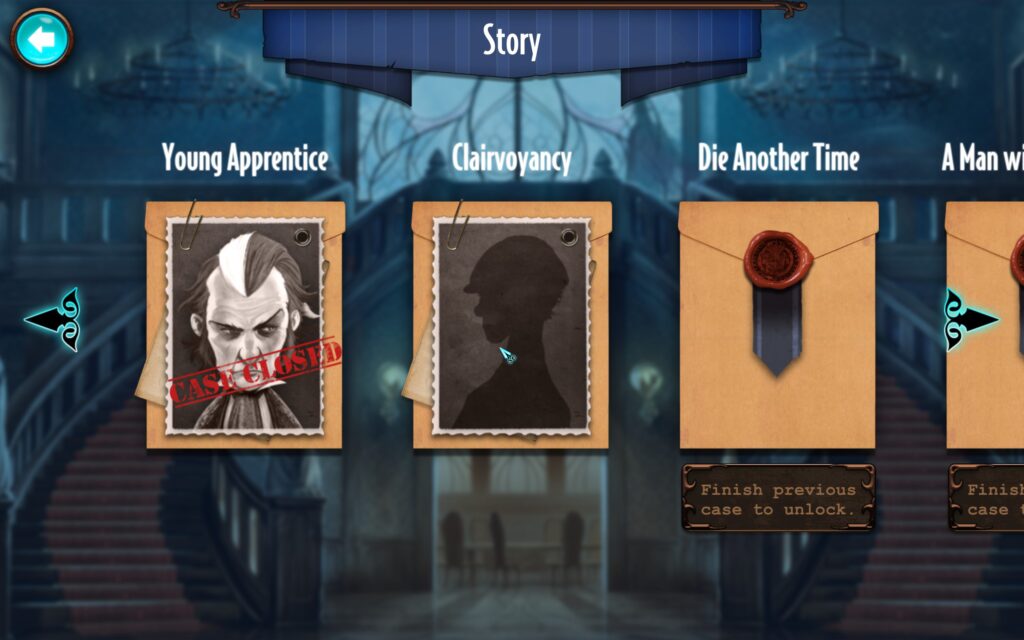
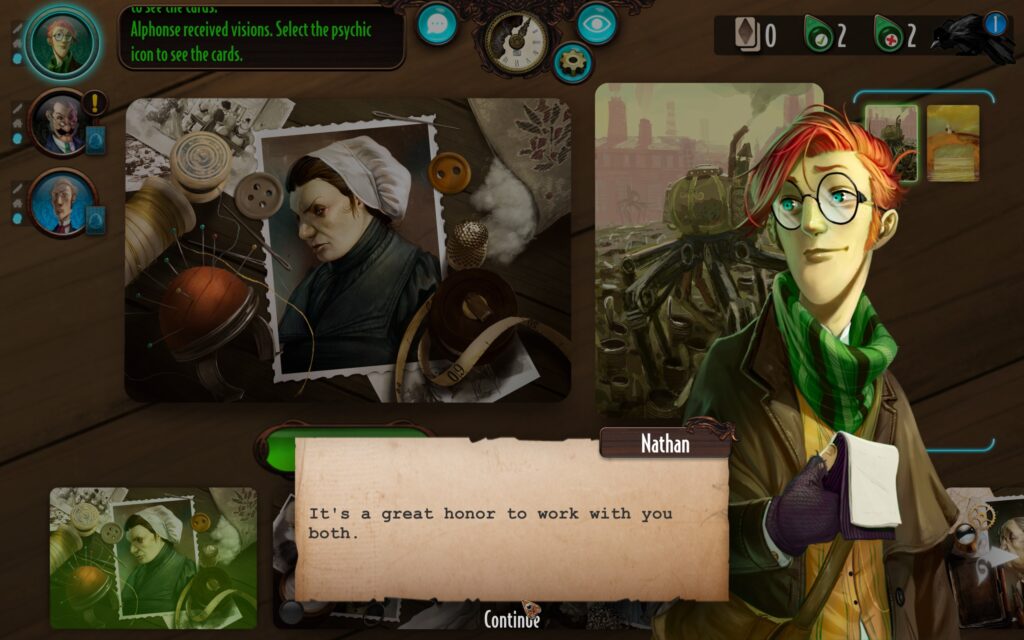
As the ghost, the only clue you get is whether each medium guessed right or wrong. It’s a fundamental flaw that tones down the experience of the game and makes it feel like a solo puzzle rather than a cooperative mystery.
With the video game version there are essentially three ways to play: with AI (either a campaign or a simulated multiplayer), pass and play, or online. Each of these provide very different experiences, though they still fall short of the board game. AI doesn’t work in a game that is based around reading people. Humans know how humans think, so much of the challenge in Mysterium comes from interpreting how a human mind would connect these visions.
Many times during my campaign playthrough I’d be clicking through cards trying to figure out how I was supposed to link them with the clues given. I’d often get bored and just start assigning visions through pure instinct, which seemed to work except when it didn’t. It becomes a game of trial and error rather than deduction.
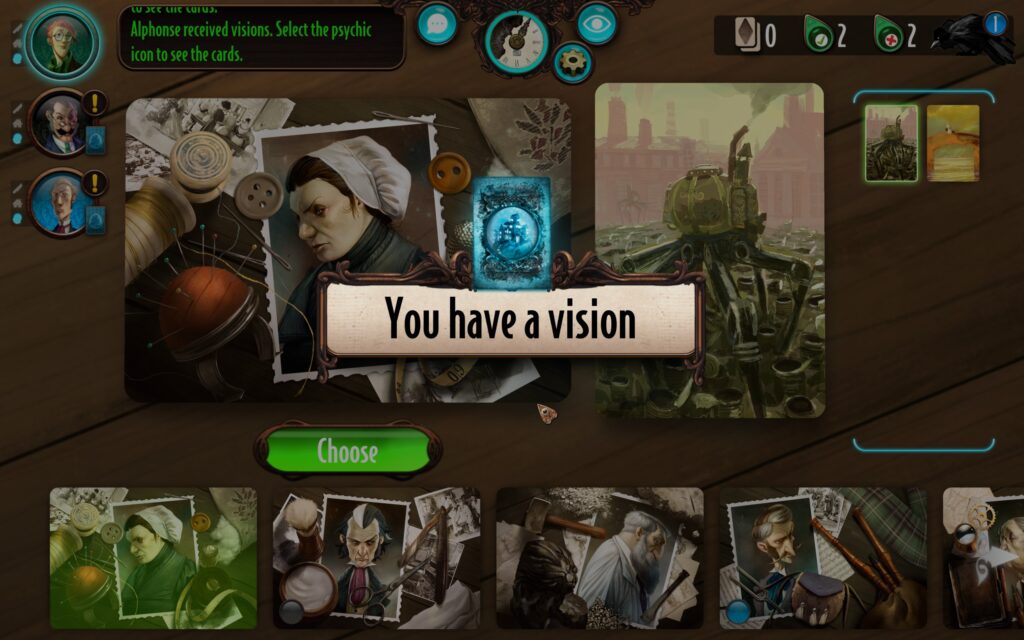
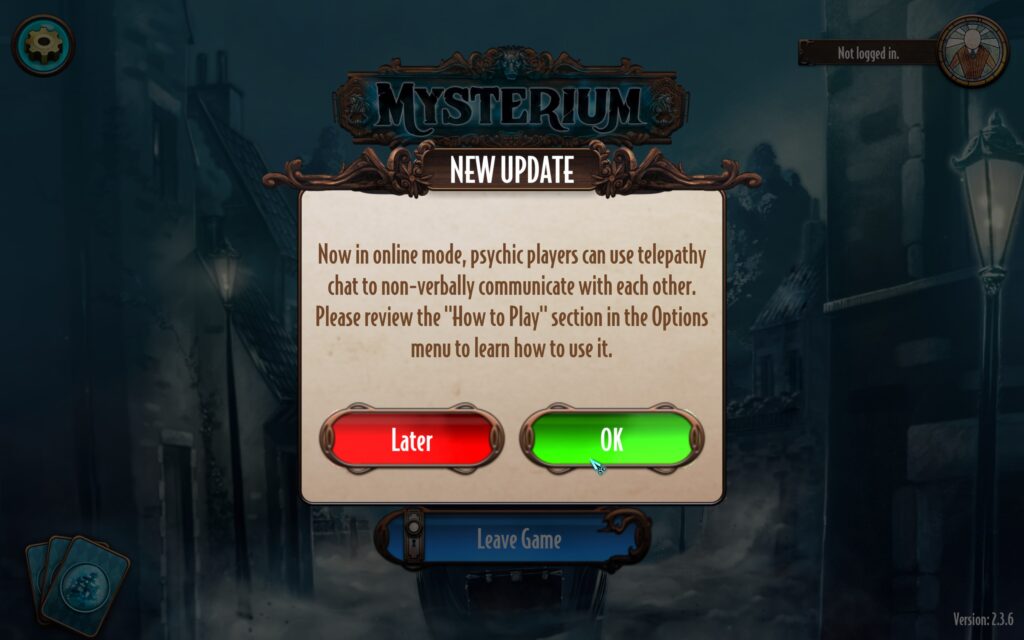
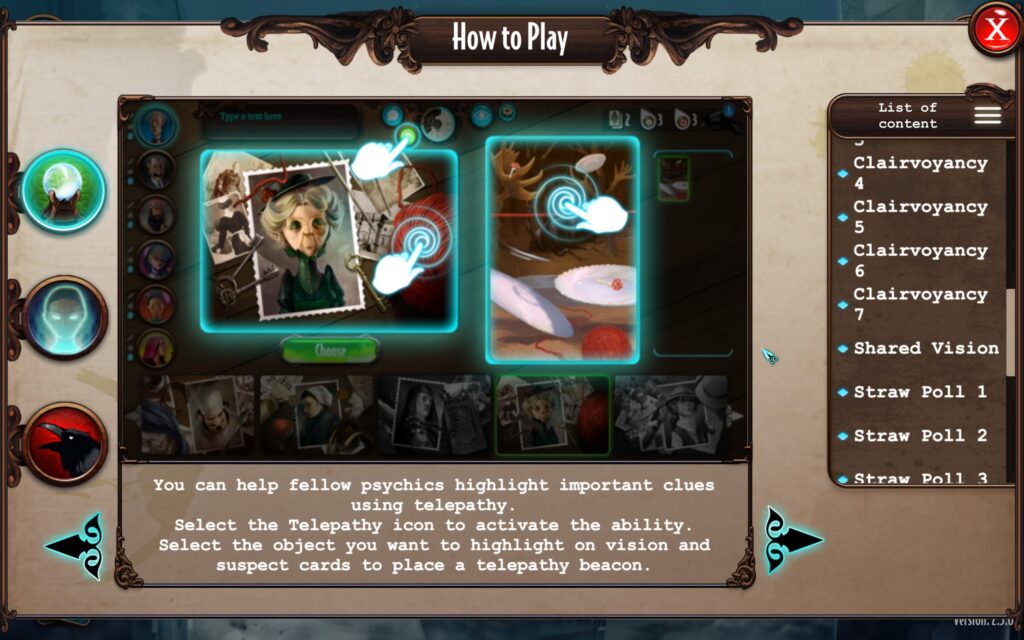
It breaks the game down into a numbers game, a simple calculation of weights, which defeats the purpose of games like these. Without human interaction, the excitement of piecing together a shared mystery disappears. Instead of feeling like you’re unravelling a ghost’s cryptic messages, it becomes an exercise in pattern-matching.
So we have pass and play. This counters the problems with using AI because now you are in a room with real people. The human interaction is there, and this can actually be fun. For someone like me, who’s often on the move, pass-and-play is at least a way to bring Mysterium along. But even then, it doesn’t quite match the tactile joy of laying cards on a table and watching your friends’ faces light up in realization, or twist in confusion.
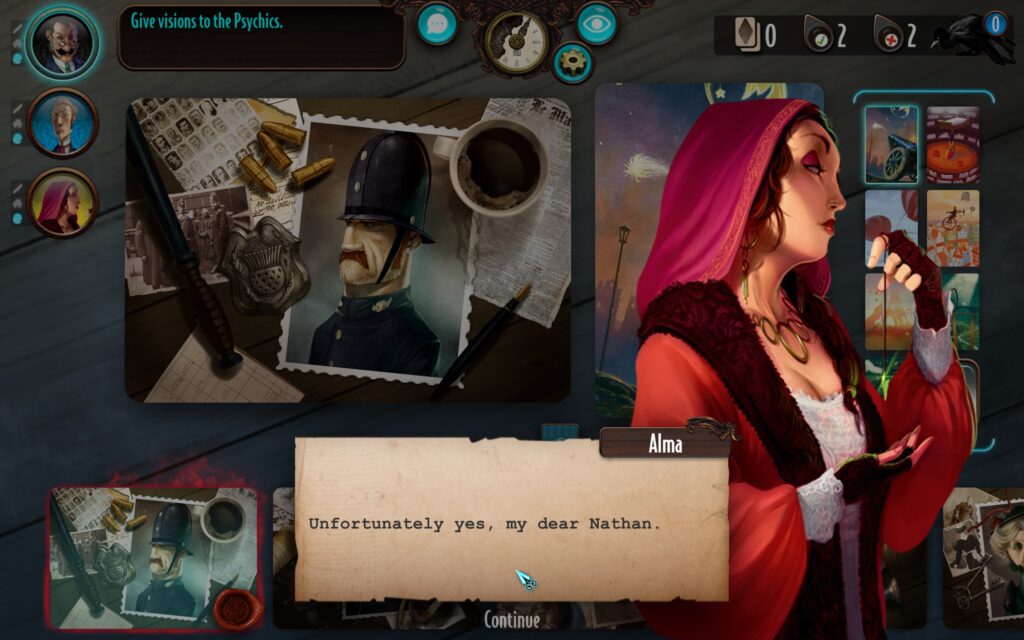
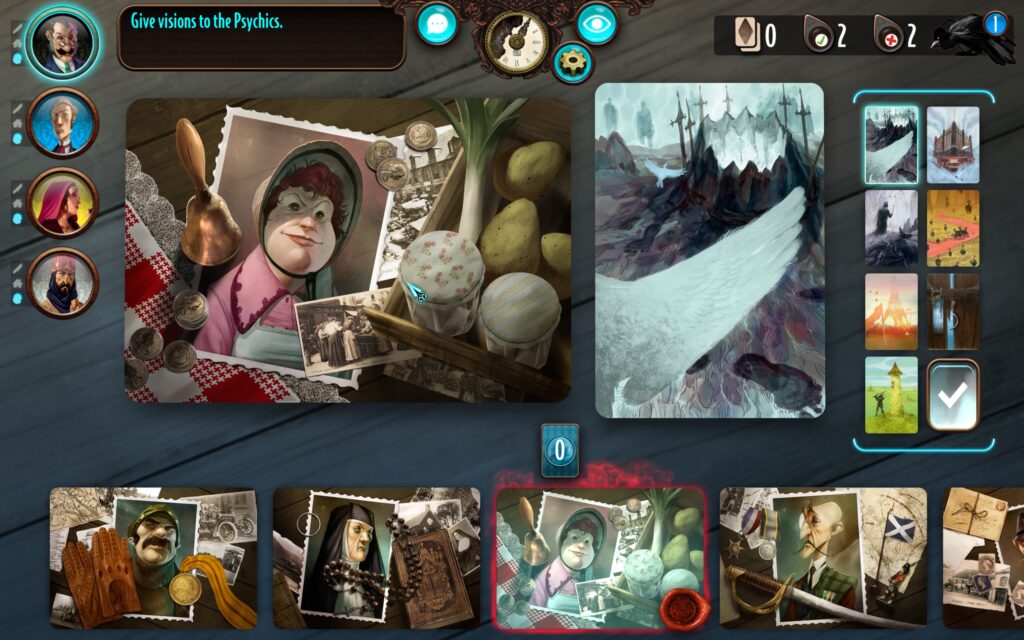
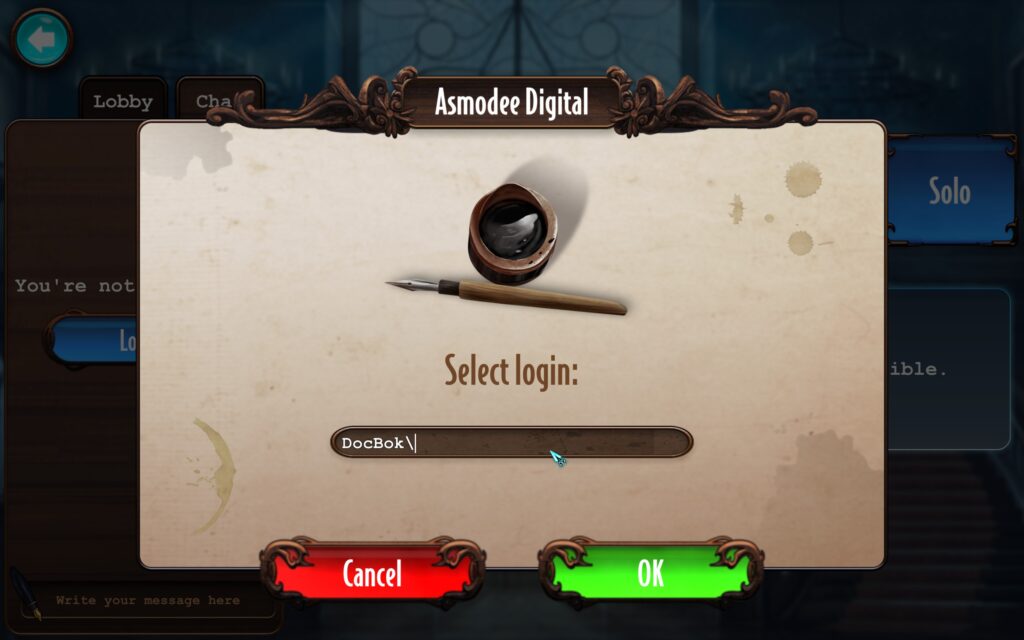
Finally, we have online play for the times when you can’t get a group of friends together. Unfortunately, this is where the game ends. I tried several times to start an online game. Sometimes it wouldn’t start matchmaking. At first I thought this was because I hadn’t completed the campaign, but it turns out there’s a bug in their online code.
The lobby was generally empty so even when it did work, there was no one to play with. I would usually see the same 4 players in a game, and sporadic chat messages saying “Hi” or “Anyone want a game?” It’s an unfortunate reality that the game simply isn’t popular enough for online matchmaking.
Even if the online mode had an active player base, the game’s lack of real-time discussion options would still be a problem. There’s no easy way to debate vision interpretations with teammates, which further isolates players.
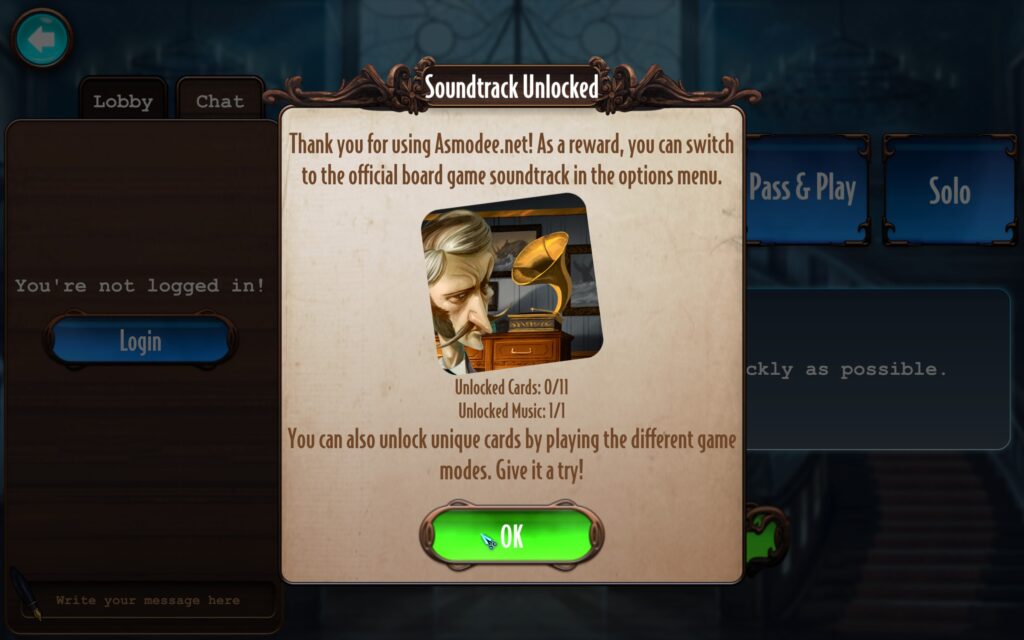
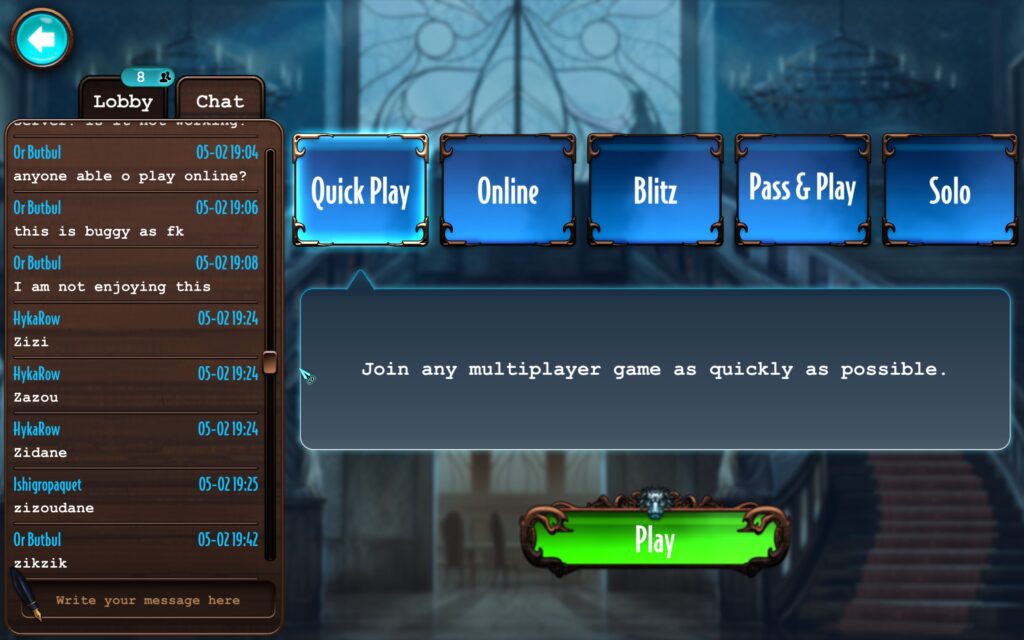
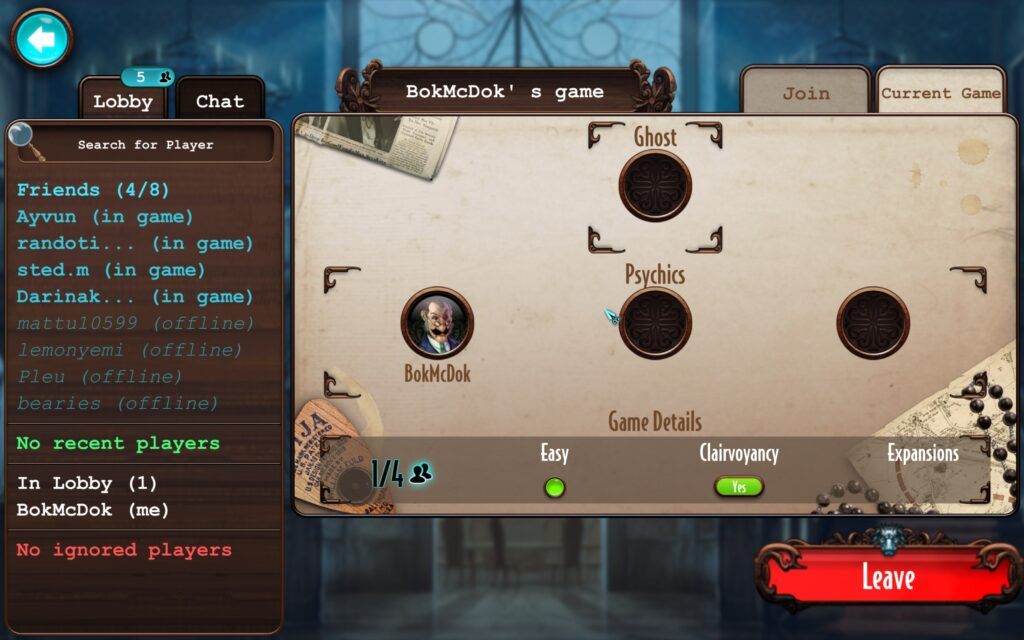
So this is where I gave up on the game. As I mentioned, I looked up reviews of the board game, and it is generally recommended by most. Shut Up & Sit Down “categorically recommends Mysterium.” The Thoughtful Gamer says “Mysterium is one of the most unique, memorable, and beautiful board game experiences out there.” While some reviews were mildly less enthusiastic, they were still giving ratings of 7/10 rather than 8/10.
While the concept of Mysterium is intriguing, this digital adaptation fails to capture the heart of the board game experience. AI is too rigid, pass-and-play feels like a compromise, and the online community is effectively non-existent. If you want the full experience, stick to the board game, because this murder mystery is lacking in spirit.




